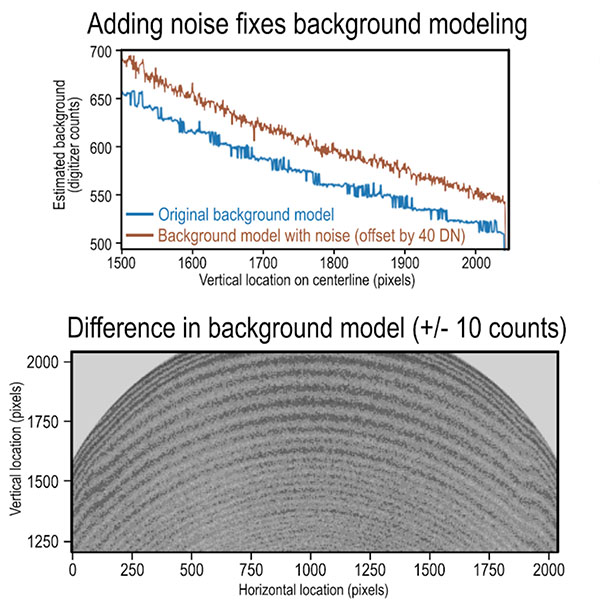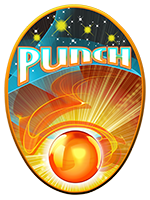The importance of noise
This is a PUNCH Science Nugget

PUNCH models of background light in the instruments were developing “stairstepping” errors (blue trace in top plot); this is resolved by adding artificial noise to the data, to reconstitute photon counting noise that is removed on-orbit. Adding noise yields smoother background models (orange trace in top plot, which is offset upwards for clarity). Difference images between the models (bottom) reveal the stairsteps that are removed with the additional noise.
PUNCH compresses its images on-orbit with “square-root coding”, to avoid downlinking photo-counting noise (Nugget #13 “Don’t Downlink Quantum Noise”). Removing the photon noise affects the statistics of remaining noise in the data, in a way that depends on the original data value. That, in turn, affects measurements of stray light in the instruments, putting a faint pattern of stripes in PUNCH photometric data (visible as the “stairstep” pattern in the blue trace in the top plot).
Ironically, adding “fuzz” on the ground, to reconstitute the photon noise removed on-orbit, makes the data more uniform and better to analyze. Reconstituting the missing photon noise is critical to keeping the uniform statistics we need to model the stray light in PUNCH. Reconstituted (“fuzzed”) data yields very smooth background estimates (orange trace in the top plot, which is offset upward to separate it from the blue). Difference images between background models derived from original data and fuzzed data (bottom) clearly show the stripes that are being removed.
Because PUNCH requires very precise relative photometry (variations in sensitivity of under 0.1% across the joint field-of-view of all three WFI instruments), even very tiny effects (like these ±5 digitizer count “stairsteps”) matter. PUNCH is rolling out new data product versions about every two weeks, as we refine calibration methodology to produce the best products possible.
PUNCH science nuggets are archived on our News Page.
You can subscribe to PUNCH nuggets by email.
NASA official releases about PUNCH are at the NASA PUNCH blog.



